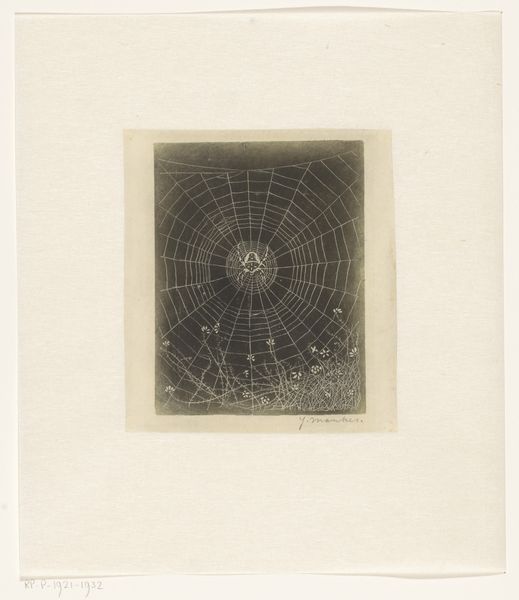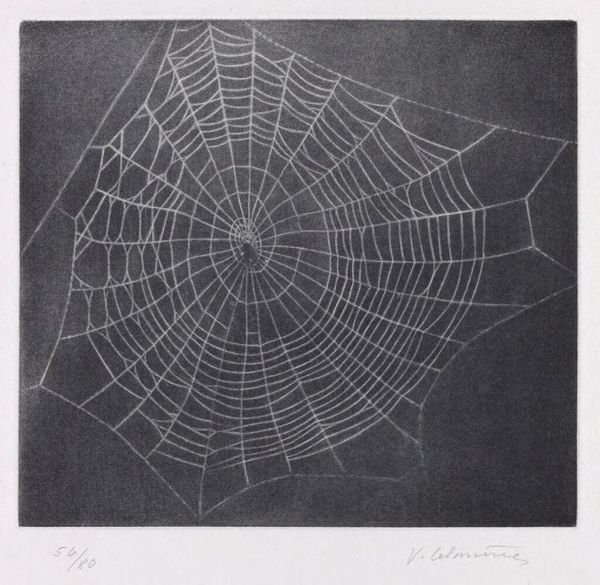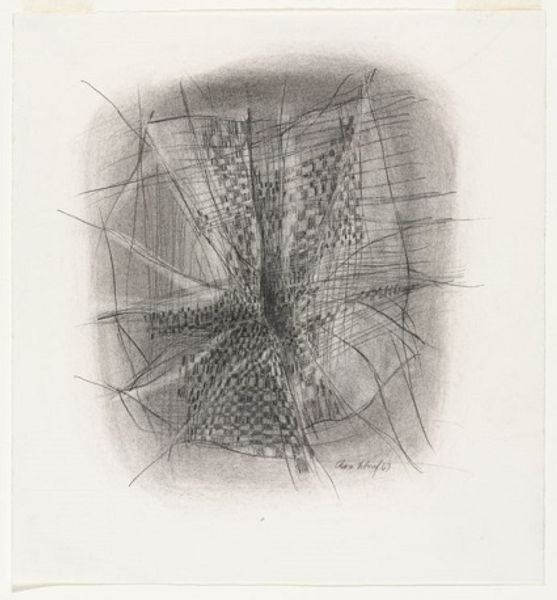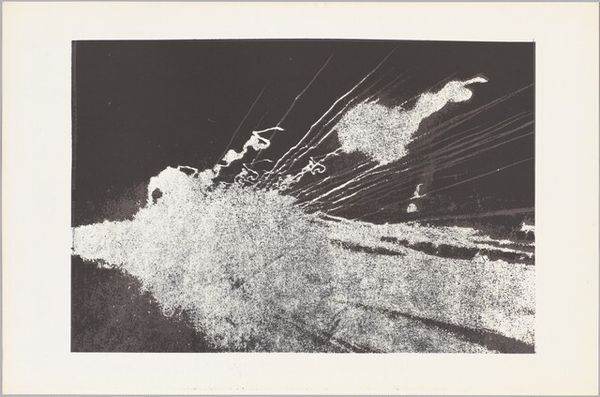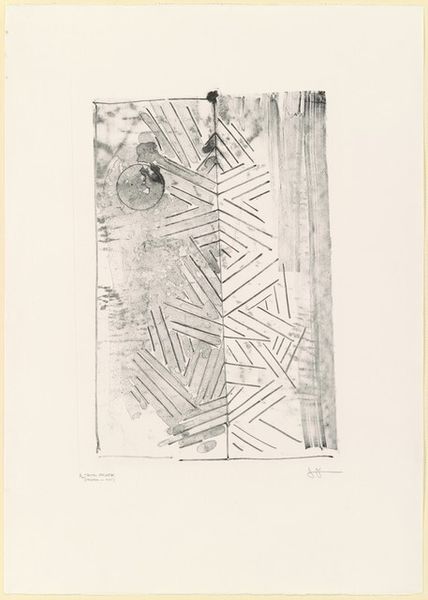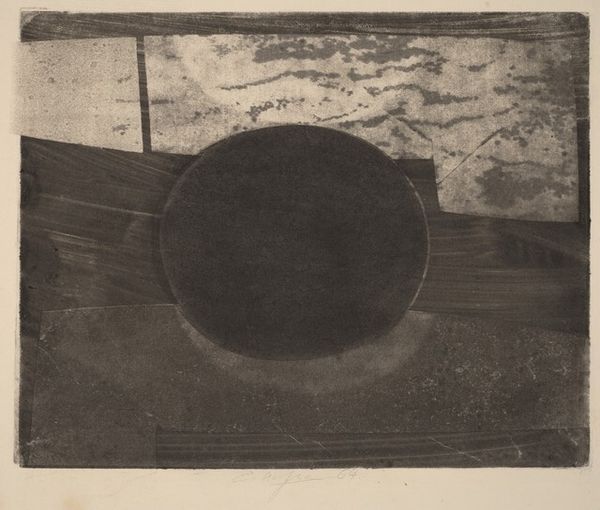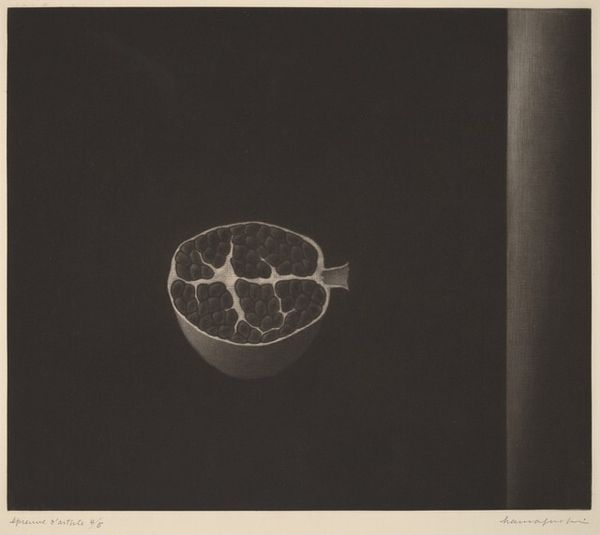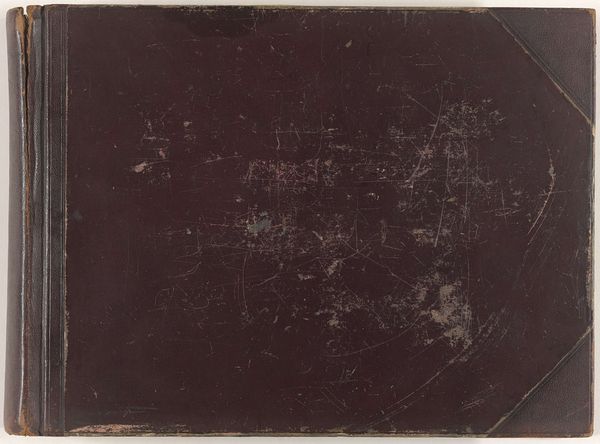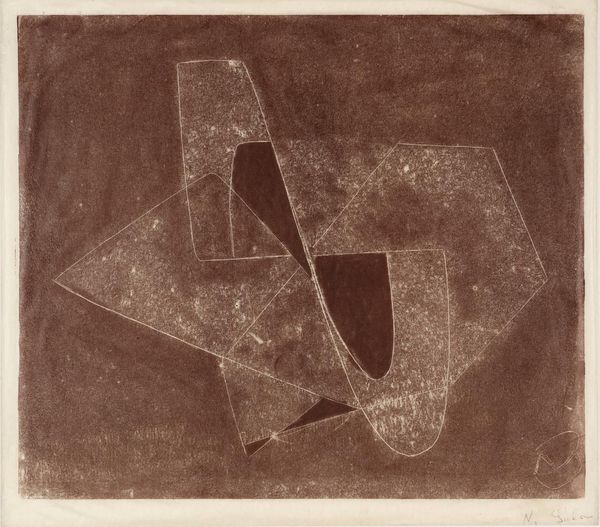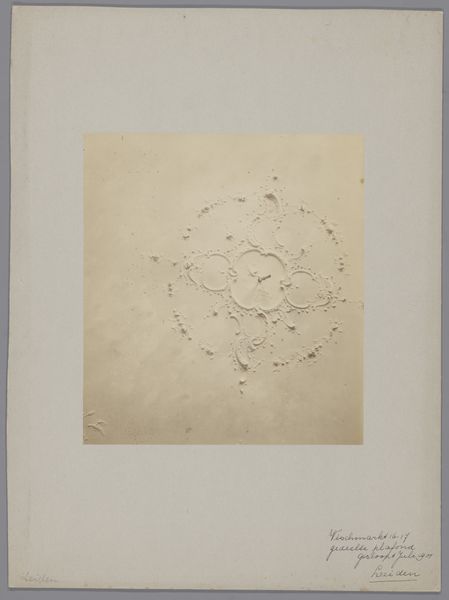
Dimensions: support: 565 x 649 mm
Copyright: © Vija Celmins | CC-BY-NC-ND 4.0 DEED, Photo: Tate
Curator: Vija Celmins, born in 1938, created this lithograph, titled "Web #1." The print, housed here at the Tate, captures a spiderweb with astonishing detail. Editor: My first impression is one of incredible stillness. The web hangs suspended in a dark void, evoking themes of vulnerability and intricate design. Curator: Absolutely. Celmins's work often explores ideas of objectivity, of representation, and the female gaze. We can consider the web here as a metaphor for constructed realities, a space for reflecting on how we perceive and interpret our surroundings. Editor: I also see it as a potent symbol of entrapment, particularly when viewing it through a feminist lens, reflecting societal pressures and the complexities of identity. The use of lithography emphasizes the delicate nature of the web. Curator: Yes, the medium mirrors the message. The printmaking process also allows for a nuanced engagement with themes of labor and process, which are key to understanding Celmins's overall practice. Editor: Considering its historical context, "Web #1" invites viewers to consider power dynamics inherent in visual culture, highlighting the politics of looking and being looked at. Curator: This piece makes us appreciate the beauty of ordinary things. Editor: It's a quiet testament to how art can reveal hidden structures in our lives.
Comments
Join the conversation
Join millions of artists and users on Artera today and experience the ultimate creative platform.
tate 6 months ago
⋮
Web #1 is a large charcoal drawing on paper of a spider’s web, based on a found photograph and not the direct observation of nature. It is signed and dated by the artist beneath the bottom right corner of the drawing. The charcoal drawing is positioned centrally on a large sheet of landscape-oriented paper and is contained by a relatively neat border – achieved by placing a piece of card around the image as the charcoal background is worked into the paper and to the edges, creating a softly feathered, rather than precise, linear border. The paper support has a slightly textured surface, so that the many layers of charcoal do not achieve a total black coverage of the off-white paper, but rather give the drawing a greyscale tonal quality. Explaining the working method for her charcoal drawings such as this one and Night Sky #19 1998 (Tate AR00163), the artist has stated: ‘I work the sheet with my hand, putting on charcoal in layers, and then I start taking it off with my hand, with my breath, and then with various kinds of erasers.’ (Quoted in Rippner 2002, p.28.) This can be understood as a kind of negative drawing – a process that moves backwards towards the original colour and surface of the paper.

